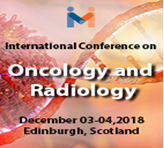Radiology 2018: New ethanol method for soft tissue imaging in micro-CT- Matej Patzelt- University in Prague
Introduction & Aim: Micro Computed Tomography (micro-CT) uses X-rays to create sections of examined structures, which can be afterwards reconstructed into 3D models. Imaging of native soft tissues is very problematic due to their low intrinsic contrast. In the past years several techniques for attenuation of contrast of soft tissues were developed. It is possible to use either intravascular contrast agents or fixative agents. Most of these techniques are however quite expensive, very difficult to use or even toxic. The goal of our study was to find a new fixation method for soft tissue imaging in micro-CT, which would be cheap and easy to use. Method: We used mouse organs-heart, lungs, kidneys, liver and brain. We fixed these organs in 97%, 50% ethanol solution and in a row of ascending concentrations of ethanol (25-97%). We scanned all specimens in micro-CT MARS (Medipix All Resolution System) after 72 hours, 168 hours and 336 hours period of fixation. Result: Ethanol fixation provided contrast enhancement in all studied organs. Fixation in 97% ethanol provided very fast fixation and the contrast among the tissues was visible already after 72 hours of fixation. Fixation for period of 336 hours gave better detailed visualization. On the other hand, this type of fixation caused organs to petrify. Fixation in 50% ethanol provided best results after 336 hours of fixation; details were not visualized as good as in 97% ethanol, samples stayed soft. Best results were obtained in fixation in row of ascending ethanol concentrations. All organs were visualized in great details without damaging the samples. Conclusion: New ethanol method is a great option for soft tissue fixation as well as the method for enhancing contrast among tissues in examined organs.
Note: This work was partly presented at World congress on Radiology and Oncology scheduled during July 16-17, 2018 at Dubai, UAE.
 Spanish
Spanish  Chinese
Chinese  Russian
Russian  German
German  French
French  Japanese
Japanese  Portuguese
Portuguese  Hindi
Hindi 



